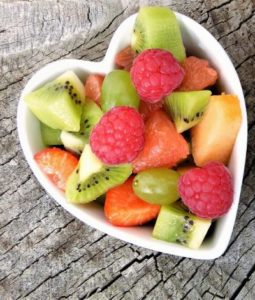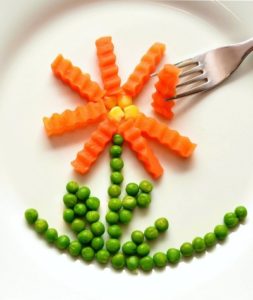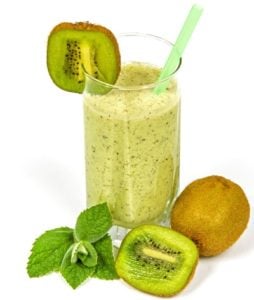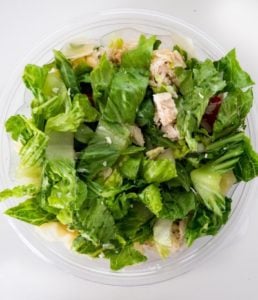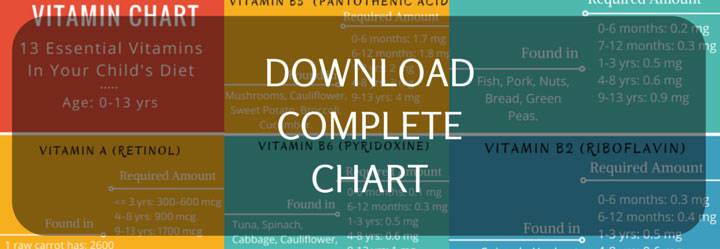VITAMINS CHART FOR KIDS
>>> Download Complete Vitamin Chart <<<
As our kids grow, it is essential for them to get adequate vitamins to ensure a healthy growth. Most little ones already will have received the optimal balance of needed vitamins from the food you make for them with love. Only in certain circumstances, you will need to supplement with specific vitamins. Still, with so many picky eaters around, it can worry you if your child is getting all the needed nutrients. This article explains to you everything you need to know about your kid’s vitamin needs.
VITAMINS CHART FOR KIDS
Apart from a good amount of proteins, carbohydrates and fat, your child needs the following essential vitamins as well in his daily diet.
1. VITAMIN A (RETINOL)
Vitamin A is best known to aid in proper vision development.
It helps in the development of eyes, skin, hair and nails.
It also stimulates the growth of the bones.
Vitamin A also builds the required immunity for the body.
Vitamin A promotes the overall cellular and tissue growth of the body.
How much Vitamin A does your child need?
According to the National academy of Sciences, over the course of few days,
<= 3 yrs: 300-600 mcg
4-8 yrs: 900 mcg
9-14 yrs: 1700 mcg
Where can you find Vitamin A?
The best foods rich in Vitamin A are carrot, sweet potato, spinach, cantaloupe, broccoli, oats, eggs, cheddar cheese, peaches and papaya.
1 raw carrot has: 2600 mcg of Vitamin A
>> Download Complete Vitamin Chart <<<
2. VITAMIN C (ASCORBIC ACID)
Helps to repair the red blood cells and provides immunity in fighting with infections.
Helps in producing Collagen in your child.
Vitamin C also fastens up the healing process and makes the gum healthier.
How much Vitamin C does your child need?
According to the National academy of Sciences,
0-6 months: 40 mg
6-12 months: 50 mg
1-3 yrs: 15 mg
4-8 yrs: 25 mg
9-13 yrs: 45 mg
Where can you find Vitamin C?
The best sources of this vitamin are guava, orange, sweet lime, papaya, kiwi, broccoli, strawberries, grapes, tomato, spinach, potato, lemon, sweet lime and banana.
½ cup orange juice has: 50 mg of Vitamin C
>> Download Complete Vitamin Chart <<<
3. VITAMIN D (CHOLECALCIFEROL)
Vitamin D helps in absorbing the calcium supplements in the body.
The calcium in turn plays a major role in developing bones and teeth of the child.
These days due to adulteration in the food and the working pressures of the parents, the diet of the child often gets neglected.
This is why calcium and multivitamin supplements are prescribed by the doctor right at the time of birth.
Also, any deficiency in Vitamin D might result in bone deformities or poor teeth formation.
DID YOU KNOW: Breast Milk is actually a poor source of Vitamin D. Thus, AAP recommends that all new born and breastfed babies receive Vitamin D supplements beginning in the first few days after they are born.
How much Vitamin D does your child need?
According to the National academy of Sciences,
0-12 months: 10 mg
>12 months: 15 mcg
Where can you find Vitamin D?
The best source of Vitamin D is sunlight.
Expose your child to sunlight for about 15 mins everyday.
However, due to skin-cancer risk, there is no official recommendation to expose your child to sunlight for prolonged periods.
Besides safe sun exposure, the following food items have plenty of Vitamin D – Salmon fish, tuna, yoghurt, milk, cheese, cereals and egg yolk. These should be given often to the kids.
½ cup fortified milk has: 14 mcg of Vitamin D
>> Download Complete Vitamin Chart <<<
4. VITAMIN E (TOCOPHEROLS)
Vitamin E helps in boosting the immunity of your child.
It also helps in metabolizing the food faster and assists in removal of toxins from the body.
How much Vitamin E does your child need?
According to the National academy of Sciences,
0-6 months: 4 mg
7-12 months: 5 mg
1-3 yrs: 6 mg
4-8 yrs: 7 mg
9-13 yrs: 11 mg
Where can you find Vitamin E?
Almonds are supposedly the best source of Vitamin E.
The other sources include wheat, sunflower oil and seeds, peanut butter, almond butter, kiwi, corn, spinach, broccoli, soybean oil and raw mango.
10gm of Almonds has: 24.5 mg of Vitamin E
>> Download Complete Vitamin Chart <<<
5.VITAMIN K (PHYLLOQUINONE)
Vitamin K mainly helps in the synthesis of blood-clotting proteins and in regulating blood calcium.
Children should receive vitamin K naturally from food sources.
Supplements of Vitamin K are not advisable for kids.
How much Vitamin K does your child need?
According to the National academy of Sciences,
0-6 months: 2 mcg
6-12 months: 2.5 mg
1-3 yrs: 30 mcg
4-8 yrs: 55 mcg
9-13 yrs: 60 mcg
Where can you find Vitamin K?
The main source of Vitamin K is Green Leafy vegetables. Other sources are: Meat, Eggs, Fish.
>> Download Complete Vitamin Chart <<<
6. VITAMIN B
There are 8 vitamins that comprise the Vitamin B family.
B1 (THIAMINE)
Important to develop healthy muscles and nerves in your child.
Also used to breakdown carbohydrates.
How much Vitamin B1 does your child need?
According to the National academy of Sciences,
0-6 months: 0.2 mg
7-12 months: 0.3 mg
1-3 yrs: 0.5 mg
4-8 yrs: 0.6 mg
9-13 yrs: 0.9 mg
Where can you find Vitamin B1?
Fish, Pork, Nuts, Bread, Green Peas.
>> Download Complete Vitamin Chart <<<
VITAMIN B2 (RIBOFLAVIN)
Helps in the formation of RBC (red blood cells), in the activation of B6 and in the creation of B3.
It is water soluble – not stored in the body.
How much Vitamin B2 does your child need?
According to the National academy of Sciences,
0-6 months: 0.3 mg
6-12 months: 0.4 mg
1-3 yrs: 0.5 mg
4-8 yrs: 0.6 mg
9-13 yrs: 0.9 mg
Where can you find Vitamin B2?
Spinach, Yoghurt, Soybeans, Mushrooms, Eggs
>> Download Complete Vitamin Chart <<<
VITAMIN B3 (NIACIN)
Vitamin B3 converts carbohydrates in your child’s body into energy.
It is also vital in maintaining nervous system function and healthy skin in your little one.
How much Vitamin B3 does your child need?
According to the National academy of Sciences,
0-6 months: 2mg
6-12 months: 4 mg
1-3 yrs: 6 mg
4-8 yrs: 8 mg
9-13 yrs: 12 mg
Where can you find Vitamin B3?
Tuna, Chicken, Turkey, Peanuts, Lamb.
>> Download Complete Vitamin Chart <<<
VITAMIN B5 (PANTOTHENIC ACID)
Helps your child’s body in metabolizing proteins, carbohydrates and fats.
How much Vitamin B5 does your child need?
According to the National academy of Sciences,
0-6 months: 1.7 mg
6-12 months: 1.8 mg
1-3 yrs: 2 mg
4-8 yrs: 3 mg
9-13 yrs: 4 mg
Where can you find Vitamin B5?
Mushrooms, Cauliflower, Sweet Potato, Broccoli, Cucumber.
>> Download Complete Vitamin Chart <<<
VITAMIN B6 (PYRIDOXINE)
It is important to aid in the healthy functioning of your child’s nervous system.
It is also extremely vital in the production of certain brain chemicals including Serotonin.
Vitamin B6 has been known to have an effect on your child’s mood.
How much Vitamin B6 does your child need?
According to the National academy of Sciences,
0-6 months: 0.1 mg
6-12 months: 0.3 mg
1-3 yrs: 0.5 mg
4-8 yrs: 0.6 mg
9-13 yrs: 1 mg
Where can you find Vitamin B6?
Tuna, Spinach, Cabbage, Cauliflower, Bell Peppers, Banana, Sweet Potato.
>> Download Complete Vitamin Chart <<<
VITAMIN B7 (BIOTIN)
Vitamin B7 is the most important Vitamin for healthy hair and nails in your child.
How much Vitamin B7 does your child need?
According to the National academy of Sciences,
0-6 months: 5 mcg
6-12 months: 6 mcg
1-3 yrs: 8 mcg
4-8 yrs: 12 mcg
9-13 yrs: 20 mcg
Where can you find Vitamin B7?
Peanuts, Tomatoes, Onions, Eggs, Almonds, Carrots.
>> Download Complete Vitamin Chart <<<
VITAMIN B9 (FOLIC ACID)
This vitamin ensures proper development of a baby’s nervous system.
It also helps in the development of your child’s cardiovascular system.
How much Vitamin B9 does your child need?
According to the National academy of Sciences,
0-6 months: 65 mcg DFE (Dietary Folate Equivalents)
6-12 months: 80 mcg DFE
1-3 yrs: 150 mcg DFE
4-8 yrs: 200 mcg DFE
9-13 yrs: 300 mcg DFE
Where can you find Vitamin B9?
Lentils, Spinach, Broccoli, Beetroot, Cauliflower, Strawberries.
>> Download Complete Vitamin Chart <<<
VITAMIN B12 (CYANOCOBALAMIN)
This vitamin is a vital co-factor during the production of DNA.
It is important in the production of RBC’s in your child.
How much Vitamin B12 does your child need?
According to the National academy of Sciences,
0-6 months: 0.4 mcg
6-12 months: 0.5 mcg
1-3 yrs: 0.9 mcg
4-8 yrs: 1.2 mcg
9-13 yrs: 1.8 mcg
Where can you find Vitamin B12?
Fish – Sardines, Tuna, Salmon
Lamb, Yoghurt, Cow’s Milk.
>>> Download Complete Vitamin Chart <<<
CONCLUSION
We hope you are now clear on the vitamin needs of your child. Do not supplement with vitamins without your doctor’s suggestion – some vitamins, particularly the fat soluble ones can easily become toxic for children in higher doses. Also, if you are using vitamins in the form of candy like gummy bears, do not give your child more than the recommended amount.
